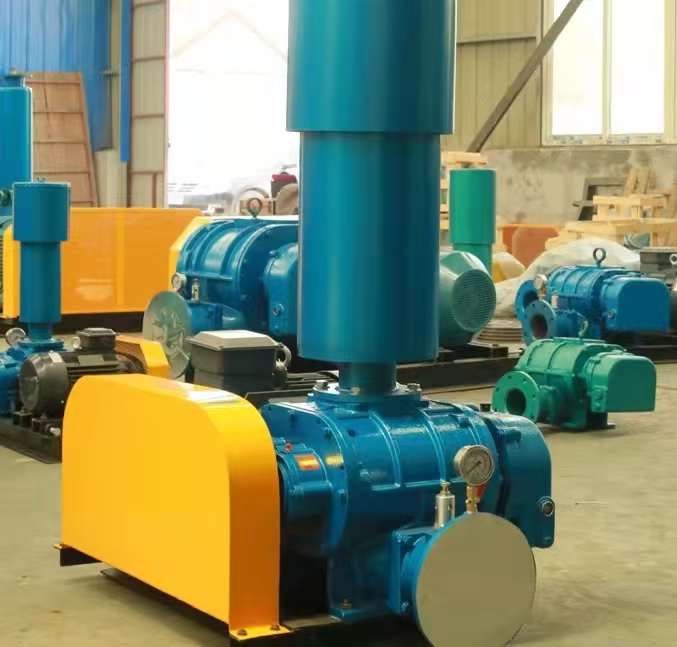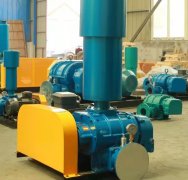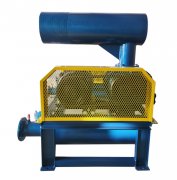**What is the speed of the Roots blower? Detailed explanation of standard speed range and selection guide**
The speed of a Roots blower is a key parameter that affects its performance, lifespan, and energy consumption. The speed of Roots blowers of different models varies greatly, usually depending on the number of motor poles, transmission mode (direct or belt), and the requirements of the application scenario. This article will provide a detailed analysis of the common speed ranges, influencing factors, and selection recommendations for Roots blowers.
---
**1. Standard speed range of Roots blower**
The speed of a Roots blower is usually determined by the number of poles and transmission mode of the matching motor. The common speeds are as follows:
**(1) Classified by the number of motor poles**
-* * 2-pole motor (synchronous speed 3000r/min)**
-Actual speed: about 2900-2950r/min (considering slip rate)
-Features: High speed, suitable for low air volume and high pressure scenarios, but with loud noise and fast wear and tear.
-Application: Short term operating conditions such as small pneumatic conveying and vacuum packaging.
-4-pole motor (synchronous speed 1500r/min)**
-Actual speed: about 1450~1480r/min
-Features: Most commonly used, balancing air volume, pressure, and lifespan, suitable for most industrial scenarios.
-Applications: sewage treatment, aquaculture, powder transportation, etc.
-6-pole motor (synchronous speed 1000r/min)**
-Actual speed: about 980~990r/min
-Features: Low speed, suitable for high air volume, low pressure requirements, long lifespan, low noise.
-Application: Long term continuous operation conditions such as large-scale aeration systems and chemical gas circulation.
**(2) Classified by transmission mode**
-Direct drive: The motor is directly connected to the fan at the same speed as the motor (e.g. 1450r/min).
-Belt drive: By adjusting the speed ratio through the pulley, higher or lower speeds (such as 2900r/min or 980r/min) can be achieved.
---
**2. Factors affecting speed selection**
**(1) Requirements for air volume and pressure**
-High speed (2900r/min): Suitable for low air volume and high pressure (such as<10m3/min, pressure>50kPa).
-* * Low speed (980r/min) * *: Suitable for high air volume and low pressure (such as>30m3/min, pressure<30kPa).
**(2) Equipment lifespan and maintenance costs**
-High speed fan: It wears out quickly, and the service life of bearings and gears is relatively short (usually requiring major repairs every 3-5 years).
-Low speed fan: operates smoothly, with a lifespan of up to 8-10 years and low maintenance costs.
**(3) Noise control**
-For every doubling of the rotational speed, the noise increases by approximately 6-8 dB (A).
-2900r/min: The noise level is usually greater than 90dB (requires the addition of a muffler).
-1450r/min: Noise level of approximately 80-85dB (acceptable).
-980r/min: Noise level<75dB (suitable for quiet environments).
**(4) Energy efficiency ratio**
-* * High speed * *: High energy consumption per unit air volume (due to increased mechanical losses).
-* * Low speed * *: Better energy efficiency and more energy-efficient long-term operation.
---

**3. How to choose the appropriate speed**
**(1) Selection Decision Reference**
|* * Working condition requirements * * | * * Recommended speed * * | * * Typical applications * *|
|-----------------------|-------------|--------------------------|
|Low airflow, high pressure | 2900r/min | Vacuum adsorption, pneumatic conveying|
|Stroke volume, medium pressure | 1450r/min | Sewage treatment, electroplating aeration|
|High air volume, low pressure | 980r/min | Pneumatic conveying and chemical circulation in cement plants|
|Low noise requirement (<80dB) | 980r/min | Hospital and laboratory gas supply|
**(2) Calculation Example**
**Case * *: A certain sewage treatment plant requires an air volume of 20m3/min and a pressure of 49kPa, hoping for low-noise operation.
-* * Selection analysis * *:
-Medium air volume requirement, medium pressure → suitable for 1450r/min or 980r/min.
-If noise and lifespan are prioritized, choose the 980r/min model (such as CSR-200).
-If the equipment budget is limited, choose the 1450r/min model (such as CSR-150).
---
**4. Possible causes and solutions for abnormal rotational speed**
**(1) Speed decrease**
-Possible reasons:
-Belt slippage (adjust tensioner or replace belt).
-Insufficient motor voltage (check if the power supply is stable).
-Impeller jamming (cleaning foreign objects or checking bearings).
**(2) Speed fluctuation**
-Possible reasons:
-Inverter parameter setting error (recalibrate PID control).
-Excessive load variation (check if the pipeline is blocked).
---
**5. Conclusion**
-* * Standard speed * *: The common speeds for Roots blowers are 980r/min, 1450r/min, and 2900r/min.
-* * Selection suggestion * *:
-High pressure low air volume → choose high speed (2900r/min).
-Pressure in stroke volume → select standard speed (1450r/min).
-Long term operation&low noise → prioritize low speed (980r/min)**
Choosing the correct speed can optimize fan efficiency, reduce maintenance costs, and extend equipment lifespan. Suggest selecting based on specific operating conditions and referring to the performance curve provided by the manufacturer.



